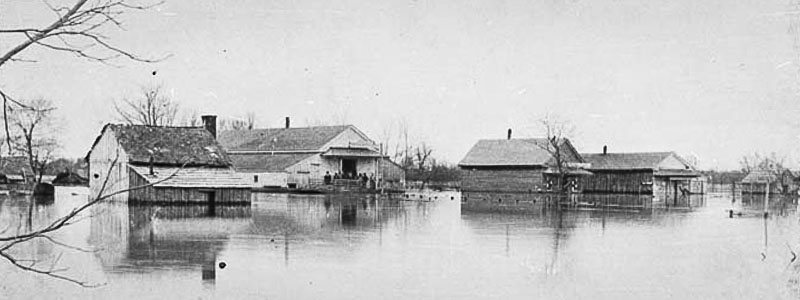Flood Surveys
FEMA Certificates

Flood surveys are generally performed to determine the location of flood zones, most often for insurance purposes. The Federal Emergency Management Agency (FEMA) designates which areas are at a specific risk of flooding based on the elevation of a given location and the location's proximity to flood-prone water bodies.
FEMA Elevation Certificate
To purchase flood insurance for a property located in FEMA designated flood hazard area, a FEMA Elevation Certificate is required. This document consists of evidence, verified by an engineer or registered land surveyor of the flood risk of a property's structures. In particular, this documentation certifies the elevation of any affected structure's lowest floor lies above the local 100-year flood elevation. A FEMA Elevation Certificate also verifies the existence or installation of flood vents used to mitigate the potential risk of property damage due to flooding.
FEMA Letter of Map Amendment (LOMA)
A Letter of Map Amendment (LOMA) is an official amendment, by letter, to an effective National Flood Insurance Program (NFIP) map. A LOMA establishes a property's location in relation to the Special Flood Hazard Area (SFHA). LOMAs are usually issued because a property has been inadvertently mapped as being in the floodplain, but is actually on natural high ground above the base flood elevation.
Our clients generally require a LOMA when their property's structures and improvements lie above the floodplain. In this case, we can map out a section of the property to exclude any insurable structures from FEMA's Flood Hazard Area
Locate Flood Zone for Construction
Locating Flood Hazard Areas is a critical component of construction planning. By locating Flood Hazard Areas and flood elevations on-site, we enable property owners and contractors to ensure that any planned improvements to a property lie above the local Flood Hazard elevation. Not only does this reduce the risk of flood damage to structures, but it also reduces the chances of insurance obstacles in the future.